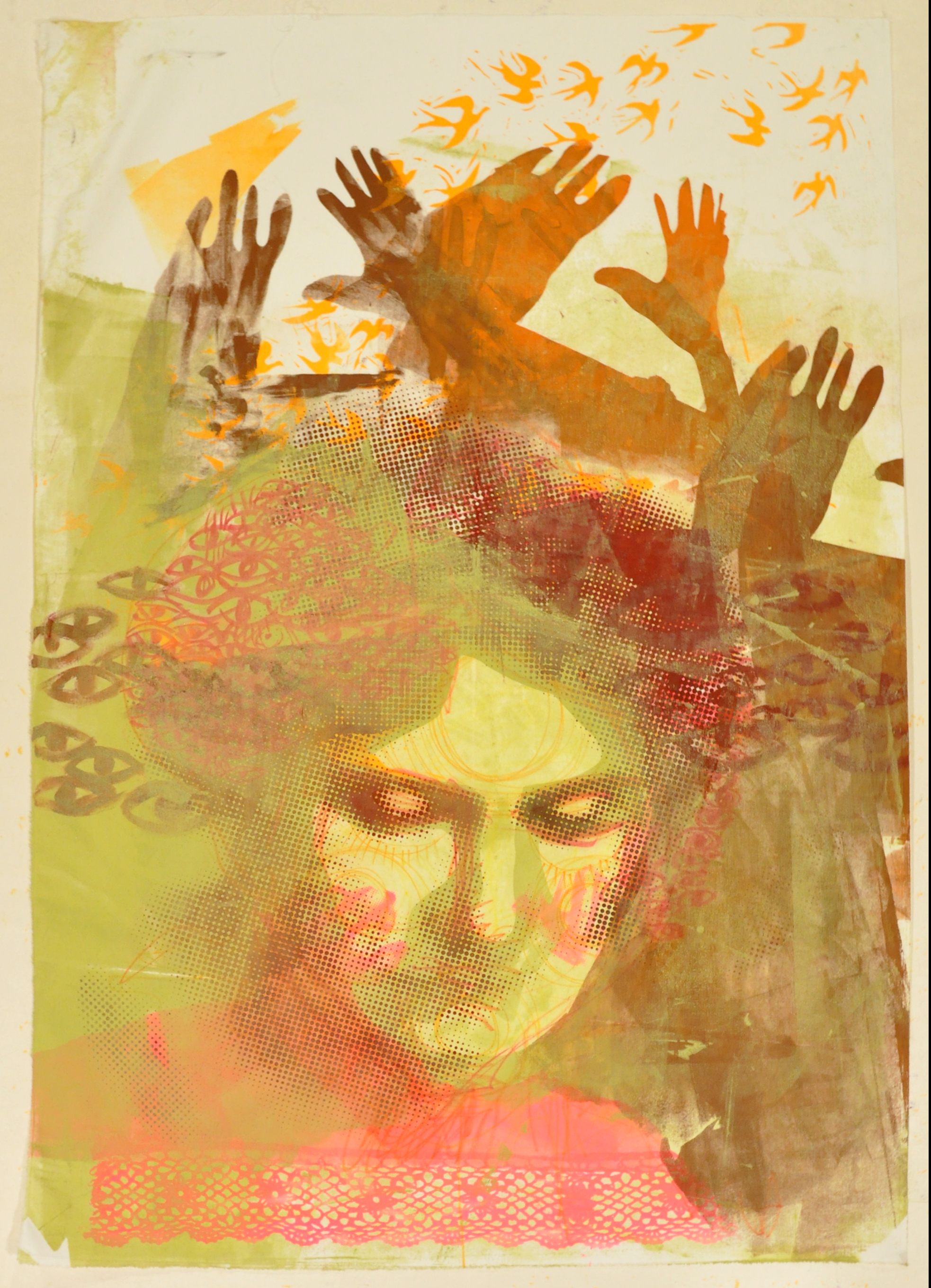Woodie Anderson
Mixed Media Serigraphy and Paper
This exhibit for me has been an evolving exploration of how the portraiture of a self and the presentation of a person as still-life overlap.
As collaborators, our conversations began with topics of beauty, decay, mutation. We talked about societal pressures, media portrayals and the weight of cultural judgments. As women, we feel these every day, but the experience is universal. Every human body is changing, though some work hard to fight or hide it. We buy things, eat things, alter ourselves surgically in attempts to control it and turn to religions to make peace with it. Our self image and what our environment tells us we should be are in constant conflict.
My personal work examines this. What rules are we judged by and how do we choose to flaunt or fight them? I explore how we invent our own mythologies and rules in our quest for personal freedom and authentic expression.
As I learned the process of paper casting I imagined the form fighting back, bursting out, growing new unexpected appendages and refusing containment. The pressure lines in the paper became the the marks found on something once bound, even after it breaks free.
The same ideas of containment and breaking free can be found in Manic Pixie Dream Girl and Sit Here and Be Adored, two pieces inspired by the familiar profile of Whistlers mother. The artist James Whistler saw his painting, Arrangement in Grey and Black No.1, as a still life composition rather than a portrait. Here I’m exploring the imagined voice of the sitter and how she became an idealized female in our culture. I insert myself, in life-size outlined form, into the pieces—continuing my dialog with this famous mother.
My print work is very process-driven. I use worn bedsheets, knotted laces and curtains—symbols of warmth, comfort and domestic life—as a canvas. As I build up layers of drawings, words, printed images and textures they are partially washed away in the dyeing process, obscured by additional layers or faded by repeated washings. There is a large element of chance in my process and the organic nature of each piece building often leads to unexpected places.
Woodie Anderson
Winston-Salem, NC
May 2013
